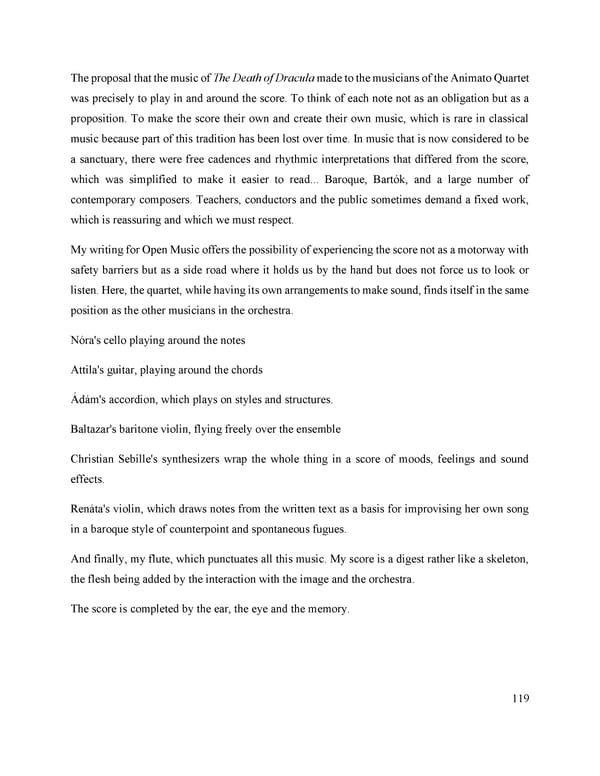The proposal that the music of The Death of Dracula made to the musicians of the Animato Quartet was precisely to play in and around the score. To think of each note not as an obligation but as a proposition. To make the score their own and create their own music, which is rare in classical music because part of this tradition has been lost over time. In music that is now considered to be a sanctuary, there were free cadences and rhythmic interpretations that differed from the score, which was simplified to make it easier to read... Baroque, Bartók, and a large number of contemporary composers. Teachers, conductors and the public sometimes demand a fixed work, which is reassuring and which we must respect. My writing for Open Music offers the possibility of experiencing the score not as a motorway with safety barriers but as a side road where it holds us by the hand but does not force us to look or listen. Here, the quartet, while having its own arrangements to make sound, finds itself in the same position as the other musicians in the orchestra. Nóra's cello playing around the notes Attila's guitar, playing around the chords Ádám's accordion, which plays on styles and structures. Baltazar's baritone violin, flying freely over the ensemble Christian Sebille's synthesizers wrap the whole thing in a score of moods, feelings and sound effects. Renáta's violin, which draws notes from the written text as a basis for improvising her own song in a baroque style of counterpoint and spontaneous fugues. And finally, my flute, which punctuates all this music. My score is a digest rather like a skeleton, the flesh being added by the interaction with the image and the orchestra. The score is completed by the ear, the eye and the memory. 119
 Lost Analogue: Exploring Film, Music, and Interdisciplinary Methods in Education Page 119 Page 121
Lost Analogue: Exploring Film, Music, and Interdisciplinary Methods in Education Page 119 Page 121